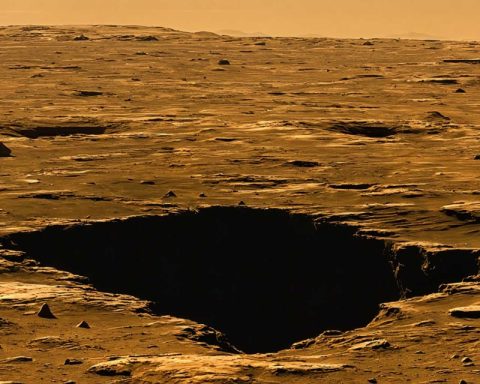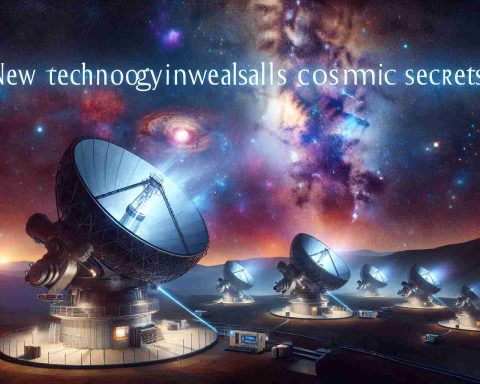Unveiling the Unusual Radio Signals from the Cosmos
Astronomers have made a surprising discovery, receiving a bizarre 2.9-hour radio signal that challenges existing astrophysical theories. For over a decade, these unique radio waves went unnoticed, as researchers primarily focused on pulsars—rapidly spinning remnants of massive stars that emit signals in predictable patterns.
The first significant clue leading to this mystery was the identification of the signal’s source. Located in the vicinity of an M-dwarf star, a cooler and smaller relative of the Sun, the emission is surprising given the star’s characteristics. The radio observations, taken with the advanced MeerKAT telescope, have unveiled what might be a new class of astronomical phenomena, dubbed Long Period Transients (LPTs).
Theoretical possibilities abound in explaining this unusual signal. One scenario suggests that the M-dwarf is in a complicated orbit around a pulsar, allowing it to emit these signals under precise conditions. Alternatively, it might be gravitationally bound to a white dwarf, a remnant of a star similar to our Sun, which could potentially be drawing material from the M-dwarf, creating the radio emissions.
These findings prompt new inquiries into the nature of radio wave production in extreme astrophysical environments. As scientists continue to unravel these cosmic puzzles, it becomes clear that each newfound mystery provides vital insights into the universe’s enigmatic behavior.
Cosmic Radio Signals: A New Frontier in Astrophysics
Unveiling the Unusual Radio Signals from the Cosmos
Recent discoveries in astrophysics have led to unprecedented insights into cosmic phenomena, particularly with the detection of an unusual 2.9-hour radio signal. This signal not only poses questions but also challenges established astrophysical theories, prompting scientists to rethink what they know about astronomical emissions.
What Are Long Period Transients (LPTs)?
The intriguing discovery of this radio signal, emitted from near an M-dwarf star, has led researchers to propose a potential new subclassification of astronomical signals known as Long Period Transients (LPTs). This classification emphasizes the need to expand our understanding of various celestial objects beyond the commonly studied pulsars.
The Source: M-Dwarf Stars
M-dwarf stars, characterized as cooler and smaller than our Sun, represent a large percentage of the stars in our galaxy. The unexpected association of the strange radio emissions with an M-dwarf star suggests that these smaller stars may host complex configurations that could produce unique electromagnetic signals under certain conditions.
The Fundamental Theories Behind the Signals
The scientific community is buzzing with hypotheses regarding the origins of these mysterious signals:
– Orbital Dynamics: One theory posits that the M-dwarf is in a dynamic orbit around a pulsar, allowing for specific conditions that could generate these radio waves. This interaction might lead to periodic emissions based on the gravitational effects exerted by the pulsar.
– Binary Systems: Another possibility involves the M-dwarf being gravitationally bound to a white dwarf. In this scenario, material transfer may occur, resulting in heightened activity and the subsequent release of radio signals.
Implications for Astrophysics
The detection of the 2.9-hour radio signal marks a turning point in our understanding of radio wave production in extreme conditions. Each new finding compels scientists to broaden their perspectives on electromagnetic radiation and its mechanisms in various astrophysical settings. This could have profound implications for our understanding of stellar evolution and the life cycles of stars.
Market Trends and Future Research in Astrophysics
As discoveries like these continue to emerge, the field of astrophysics is likely to see an uptick in research funding and public interest. The innovative use of advanced telescopes, such as the MeerKAT, is becoming essential in revealing these cosmic mysteries. Future studies will likely focus on:
– Cataloging and classifying other unusual astronomical phenomena discovered through modern equipment.
– Developing new theoretical frameworks to interpret the signals emitted from different types of stars.
– Enhancing observational strategies to locate further examples of LPTs or similar phenomena.
Conclusion
The unusual radio signals emanating from the cosmos signify a burgeoning frontier in astrophysical research. As scientists delve deeper into the nature of these emissions, they may unlock new chapters in our understanding of the universe, highlighting the intricate complexities of stellar systems.
For more related content, visit NASA’s website for the latest updates and discoveries in space science.

















